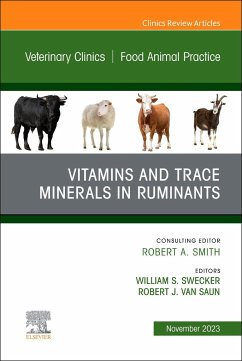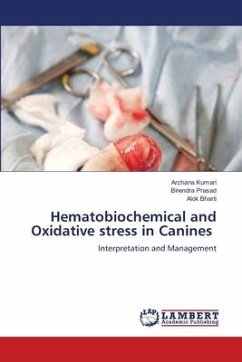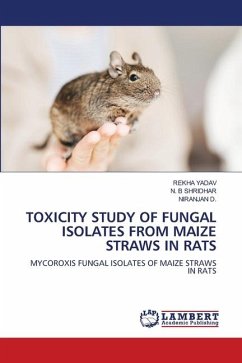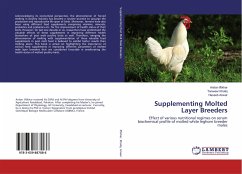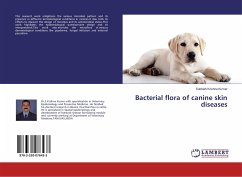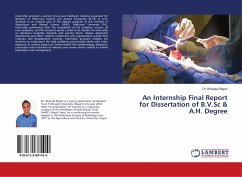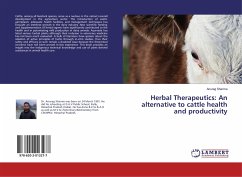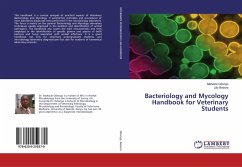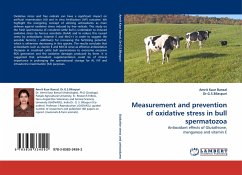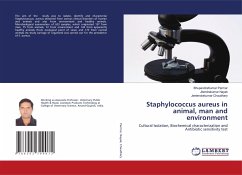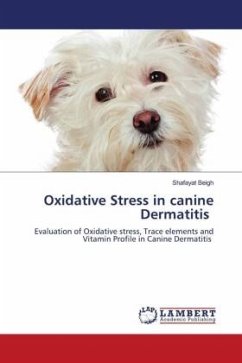
Oxidative Stress in canine Dermatitis
Evaluation of Oxidative stress, Trace elements and Vitamin Profile in Canine Dermatitis
Versandkostenfrei!
Versandfertig in 6-10 Tagen
40,99 €
inkl. MwSt.

PAYBACK Punkte
20 °P sammeln!
During the study, a total of 112 dogs were screened for various dermatological problems. The overall prevalence of dermatitis was 20.96 per cent with maximum during the month of July (38.88%). On etiological basis, bacterial, fungal, parasitic, non-specific and nutritional dermatitis was 25.00, 18.75, 34.82, 14.28 and 7.13% respectively. Among nutritional dermatosis 2.67% was zinc deficient and 4.46% was vitamin A deficient. Dogs of less than one year of age were found most susceptible to bacterial, fungal and parasitic dermatitis. Staphylococcus spp, Microsporum spp and Demodex canis were the...
During the study, a total of 112 dogs were screened for various dermatological problems. The overall prevalence of dermatitis was 20.96 per cent with maximum during the month of July (38.88%). On etiological basis, bacterial, fungal, parasitic, non-specific and nutritional dermatitis was 25.00, 18.75, 34.82, 14.28 and 7.13% respectively. Among nutritional dermatosis 2.67% was zinc deficient and 4.46% was vitamin A deficient. Dogs of less than one year of age were found most susceptible to bacterial, fungal and parasitic dermatitis. Staphylococcus spp, Microsporum spp and Demodex canis were themain organism responsible for bacterial, fungal and parasitic dermatitis. Significantchanges occurred in Hb, PCV, TEC and TLC in all types of dermatitis. Varying changesin DLC was observed in different type of dermatitis. Fungal dermatitis and demodicosisshowed a significant change in total protein which was accompanied by decreasedalbumin in demodicosis. Significant increase in ALT and AST was found in demodicosisonly and significant decrease in cholesterol was found in fungal dermatitis anddemodicosis.



